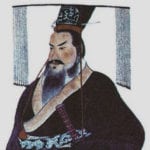 Technology
Technology  Technology
Technology  Our World
Our World 10 Ways Icelandic Culture Makes Other Countries Look Boring
 Misconceptions
Misconceptions 10 Common Misconceptions About the Victorian Era
 Mysteries
Mysteries 10 Strange Unexplained Mysteries of 2025
 Miscellaneous
Miscellaneous 10 of History’s Most Bell-Ringing Finishing Moves
 History
History 10 Great Escapes That Ended Right Back in Captivity
 Weird Stuff
Weird Stuff 10 Fascinating Things You Might Not Know About Spiders
 Food
Food 10 Everyday Foods You Didn’t Know Were Invented by the U.S. Military
 History
History 10 Odd Things Colonial Americans Kept at Home
 Weird Stuff
Weird Stuff 10 Superstitious Beliefs That Once Consumed Entire Cultures
 Technology
Technology 10 Scientific Breakthroughs of 2025 That’ll Change Everything
 Our World
Our World 10 Ways Icelandic Culture Makes Other Countries Look Boring
 Misconceptions
Misconceptions 10 Common Misconceptions About the Victorian Era
Who's Behind Listverse?

Jamie Frater
Head Editor
Jamie founded Listverse due to an insatiable desire to share fascinating, obscure, and bizarre facts. He has been a guest speaker on numerous national radio and television stations and is a five time published author.
More About Us Mysteries
Mysteries 10 Strange Unexplained Mysteries of 2025
 Miscellaneous
Miscellaneous 10 of History’s Most Bell-Ringing Finishing Moves
 History
History 10 Great Escapes That Ended Right Back in Captivity
 Weird Stuff
Weird Stuff 10 Fascinating Things You Might Not Know About Spiders
 Food
Food 10 Everyday Foods You Didn’t Know Were Invented by the U.S. Military
 History
History 10 Odd Things Colonial Americans Kept at Home
 Weird Stuff
Weird Stuff 10 Superstitious Beliefs That Once Consumed Entire Cultures
10 Of The Most Unflattering Nicknames Given To Royals
The nicknames that royals are given by their subjects tend to become part of the historical record. For some that turns out to be a very good thing indeed – as a heroic sounding nickname can turn a pretty average reign into the stuff of legend – but others are not so fortunate.
For every leader of men who has been dubbed Richard the Lionheart, Catherine the Great or William the Conqueror, there are some unfortunate souls like the ones we will look at in this list.
10 Failed Assassination Attempts On British Royals
10 Halfdan the Bad Entertainer
 is said to have been the King of Norway, having taken over this role from his father King Eystein – who had an even more embarrassing nickname. The real full name of Halfdan was Halfdan Eysteinsson King Uppsala and he was said to have been a brave and brilliant warrior in battle who was something of a champion when it came to pillaging and bringing back the spoils of war to his kingdom.
is said to have been the King of Norway, having taken over this role from his father King Eystein – who had an even more embarrassing nickname. The real full name of Halfdan was Halfdan Eysteinsson King Uppsala and he was said to have been a brave and brilliant warrior in battle who was something of a champion when it came to pillaging and bringing back the spoils of war to his kingdom.
So it seems a bit strange that he did not end up being known as Halfdan the Mighty Pillager or Halfdan the Battle Brave, but instead ended up with a nickname that makes him sound like he was most notable for being crap at charades. In fact the real reason why he went down in history as The Bad Entertainer is apparently because, although he gifted land and money to the men who served under him in battle, he was a bit mean with the drinks and snacks when they visited him at his home. There is a lesson for kings and queens here: always break out the booze and biscuits for your subjects, because if you forget, they never will.[1]
9 Bernard the Hairy Footed
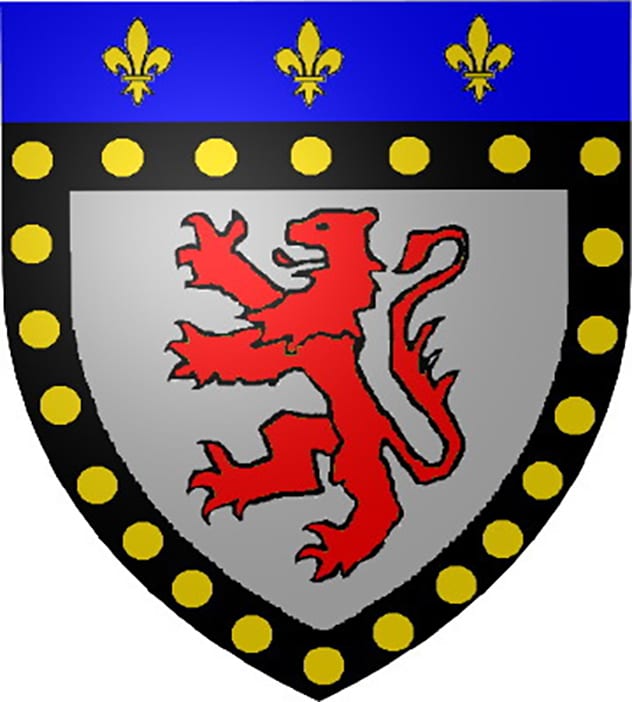
Bernard Plantapilosa was a French nobleman who served as the Count of Auvergne between 1872 and his death in 1886. This was not the only position of nobility he held during his fairly brief 45 years of life though, as he had earlier spent five years as the Count of Autun before losing that title to Bernard of Gothia. The reason why he was deposed has been lost to history, but it is possible that the people of Autun demanded he be replaced by someone who did not have to shave his toes every morning.
There is still a lot of historical speculation as to why he got saddled with his embarrassing nickname, with the most commonly accepted theory being that ‘plantapilosa’ roughly translates as ‘hairy feet’. According to this version of the story, ‘planta’ in Latin means the sole of the foot and his family name of Plantapilosa was derived from that. That certainly sounds like a sensible explanation for what is a really bizarre nickname to give anyone, but we should not completely rule out the possibility that Bernard was part werewolf. Or that he just had spectacularly hairy feet.[2]
8 Ivalyo the Cabbage
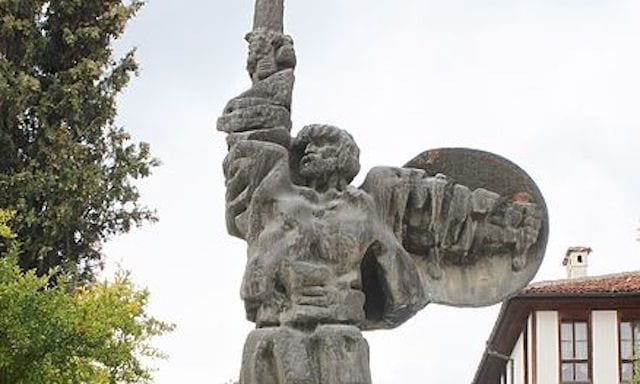
King Ivalyo may have been the ruler of Bulgaria for only a very short time after his crowning in 1278, but he rose all the way from a peasant background to become its king by leading an uprising. He initially came to fame while King Constantine Tich was on the throne and Bulgaria was struggling both with the Tatar invaders and an economic crisis. Ivalyo put together a peasant army that would defend Northern Bulgaria against the Tatars and defeated them in numerous battles. However, instead of being grateful for this, King Constantine chose to wage war against the peasants, only for his army to be routed by them and Constantine killed by Ivalyo.
With Bulgaria still under threat from both the Tatars and the Byzantines, the widowed Queen Mary chose to marry Ivalyo and make him the new King. He went on to win battles against the Tatars and the Byzantines with his army of peasants, but eventually met his match in King Georgi Terter of Tarnovo. The peasants found themselves unable to overcome their opponents and Ivalyo went to a rival – Nogai, the leader of the Tatars – for help and was killed by him. So why did someone with this sort of record of bravery and success in battle get nicknamed The Cabbage? Apparently, it was a reference to his humble working class origins.[3]
7 Alfonso the Slobberer
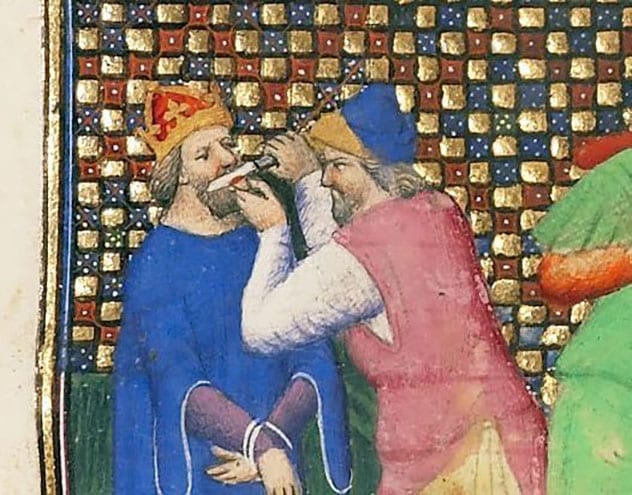
Alfonso IX was the son of King Ferdinand II of Galicia and Leon and took over as the ruler of those regions when his father died in 1188. He stayed on the throne until his own death in 1230 and during his reign he oversaw the modernization of his kingdom, creating the very first parliament to represent ordinary citizens in the history of Western Europe – known as the Cortes de Leon. Alfonso also chose to set up the University of Salamanca during 1212, to improve educational standards among his subjects.
Furthermore, he was no slouch in terms of military conquest, overseeing a victorious campaign against Extremadura and the invasion of Castile in an attempt to rescue the defeated Alfonso VIII. He then went on to marry one of his own cousins to ensure peace between Castile and Leon, which led Pope Celestine III to put both Alfonso and Leon under interdict – which means they are not allowed to receive the sacraments. Despite all of this, Alfonso IX was destined to be remembered as The Slobberer because he had a habit of getting very angry and tended to foam at the mouth a bit when he did. Still, if it did not put his cousin off, who are we to judge?[4]
6 Justinian the Slit-Nosed
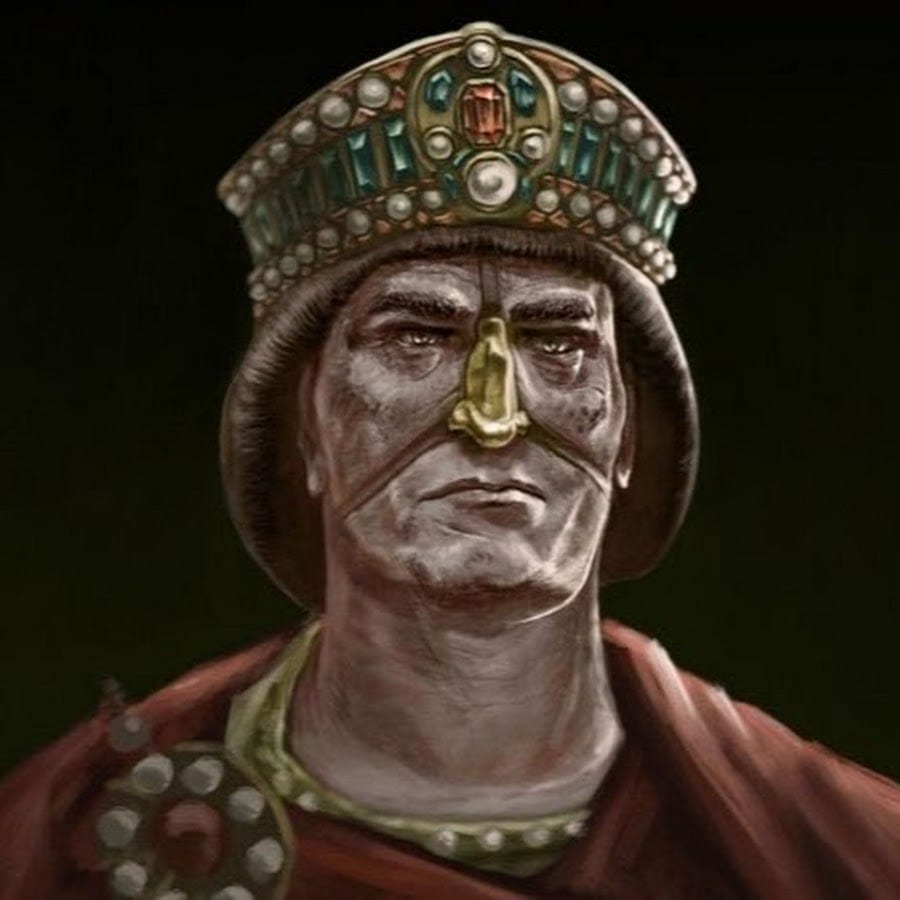
It is bad enough having your nose cut with a knife in public, but it would definitely add insult to injury if people went around called you ‘slit-nose’ for the rest of time. That was the fate of Justinian, the ruler of the Byzantine Empire between 685 and 695 and a second time between 705 and 711 AD. Justinian was pretty much a tyrant who taxed his subjects way more than they could possibly afford and ordered the murder of thousands of Slavs – including women and children – that he felt had not been loyal enough to him.
He was also a religious fanatic who persecuted anyone whose beliefs were different from his own Orthodox Christian ones, with the Paulicians being the sect that received particularly brutal treatment. Justinian was such a paranoid, bloodthirsty and generally crazy ruler that he was overthrown by a general called Leontius in 695, a move that was backed by his subjects who hated his guts. It was Leontius who ordered the nose cutting to prevent Justinian returning as Emperor on the grounds that no-one with a physical deformity was allowed to rule the Empire. It did not work though, as Justinian returned after a period of disastrous rule by Leontius and had the nose of his rival chopped off completely as a punishment. In all honesty, Justinian the Slit-Nosed is probably a nicer name than he deserved.[5]
10 Wild Adventures Of Former Royals
5 Fruela the Leprous
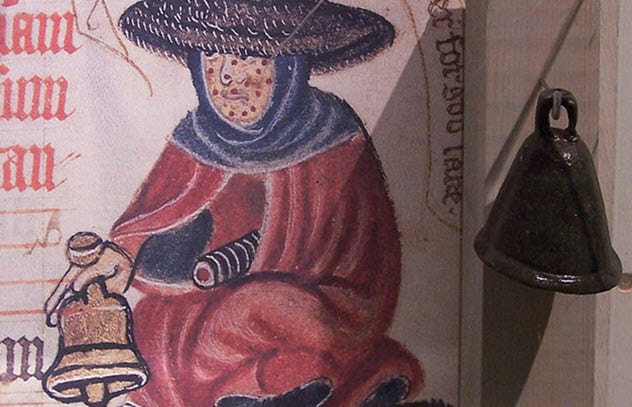
Fruela II ruled as the third King of Leon, but was on the throne for only a year – from 924 until 925 when he died. Given his nickname, it is a bit surprising to discover that his death apparently came from natural causes rather than the more expected leprosy. He was sick with that particularly disgusting disease at the time though, so the ‘natural causes’ might just have been several vital body parts falling off at the same time. Actual information about what Fruela did while was on the throne is pretty scarce, but given that it was only fourteen months it seems likely that the answer is: not a lot.
Researchers into the period have suggested that the main thing of interest during his reign, other than the fact that he managed to become king despite having leprosy, was a conflict with some noblemen who were not very happy about him being ruler. However, he apparently did very little to change Leon itself, partly because his actual authority was not that great despite having the title of ‘king’. Fruela II has probably gone down in history as The Leprous mainly because that was the most notable thing that anyone remembers about him.[6]
4 Archibald the Loser
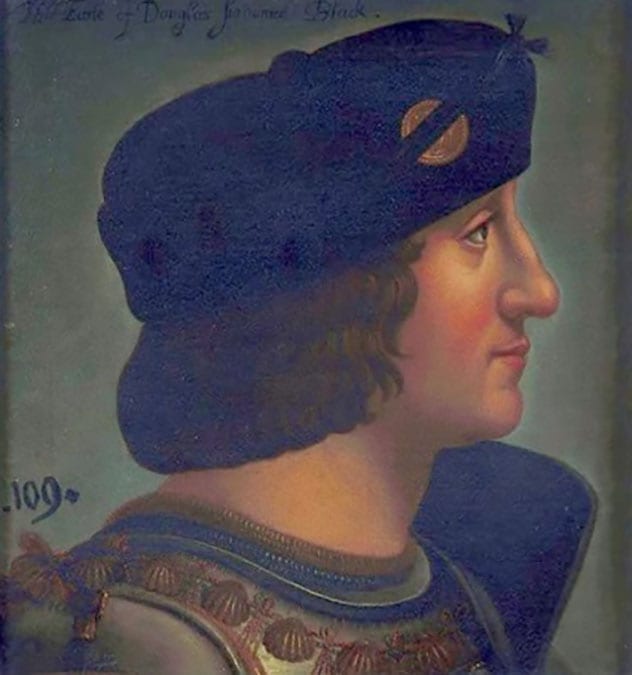
If we want proof that insults do not change very much over time, there is the story of Archibald Douglas. He was the 4th Earl of Douglas and he found himself lumbered with Donald Trump’s favorite term of abuse despite being born all the way back in 1372. To be exact he was known as ‘the Tyneman’, which is an old Scottish word that basically means ‘loser’. He was the son of the equally unfortunately nicknamed Archibald the Grim and inherited the role of Earl from him. This was actually a position of serious power and influence, so it seems weird that he should have gone down in history as ‘The Loser’ until we look at his record in battle.
Archibald was not short of bravery, as he took part in numerous major battles during his lifetime, including the Homildon Hill Battle, the Battle of Shrewsbury and the Battle of Verneuil, but unfortunately he ended up on the losing side every time. This cost him more than just his historical reputation, as he lost one of his eyes in the defeat at the hands of the English at Homildon and one of his testicles (!) at the Battle of Shrewsbury. It is possible that he got his nickname because of his habit of losing bits of himself on the battlefield rather than because of his military record, but it was at the Battle of Verneuil between England and France in 1424 that he truly earned it. Again he was on the defeated side and this time it was his life that he lost.[7]
3 Eystein the Fart
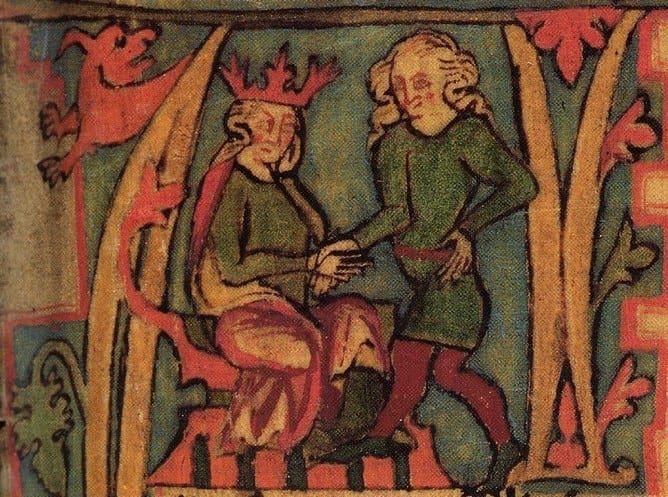
We told you that the father of Halfdan the Bad Entertainer had a much more embarrassing nickname and here it is. He was the King of Romerike in Norway from his birth in 0736 to his death in 0810 and the people of Romerike must have really sniffed the wind when he came to the throne. Eystein was a Viking and spent much of his life doing all the things Vikings usually did, mostly warmongering and pillaging – and he was pretty good at it by most accounts (maybe because his enemies were too busy holding their noses to hold their weapons).
His embarrassing nickname is said to have been an Old Norse one that actually translates as ‘The Swift’. That makes sense, as we all know that the most significant thing about a fart is how quickly it moves. Whether he got his name because he moved like the wind or because he had the wind, it was his enthusiasm for pillaging that led to the death of Eystein. He took his ships and men to Varna to plunder it of gold and drowned at sea, with the colorful mythological account of his death suggesting that the King of Varna – Skjold – was actually a warlock and used his magical powers to tip Eystein over the side of his ship into the ocean.[8]
2 Joan the Lame
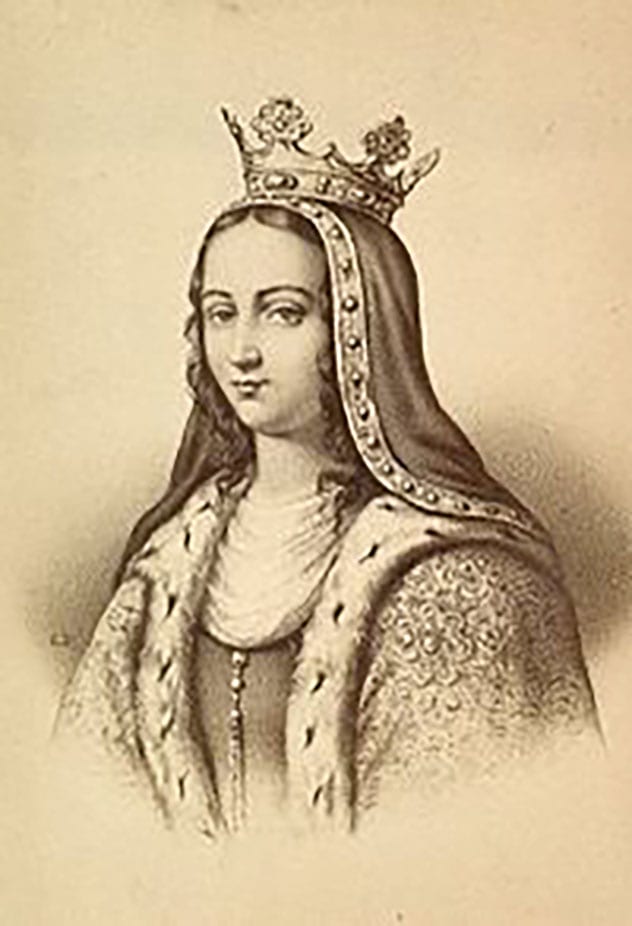
It is not only male rulers who can end up with unflattering nicknames, as this former Queen of France proves. She was the consort of King Philip VI but acted as the monarch in his place during periods when he was away fighting for his country in the Hundred Years War. Joan was a very well educated woman and throughout her period on the throne she dedicated much of her time to improving standards of education. Modern historical scholars see her as a patron of learning, but at the time her powerful personality and the favoritism she showed towards nobles from the Burgundy region of France – which she was the Countess of – made her unpopular with rival factions in the royal court.
She was unfortunate enough to have been born with a physical deformity and some at that time believed this to be an outward sign of her evil character. She was given the nickname ‘la male royne boiteuse’, which translates as ‘the lame male queen’ and was a dig at both her appearance and the amount of control she was said to have over her husband. Joan died of the plague in September 1348, but 14th century France can consider itself cancelled in 2020 on the grounds of sexism, ableism and body shaming.[9]
1 Constantine the Dung-Named
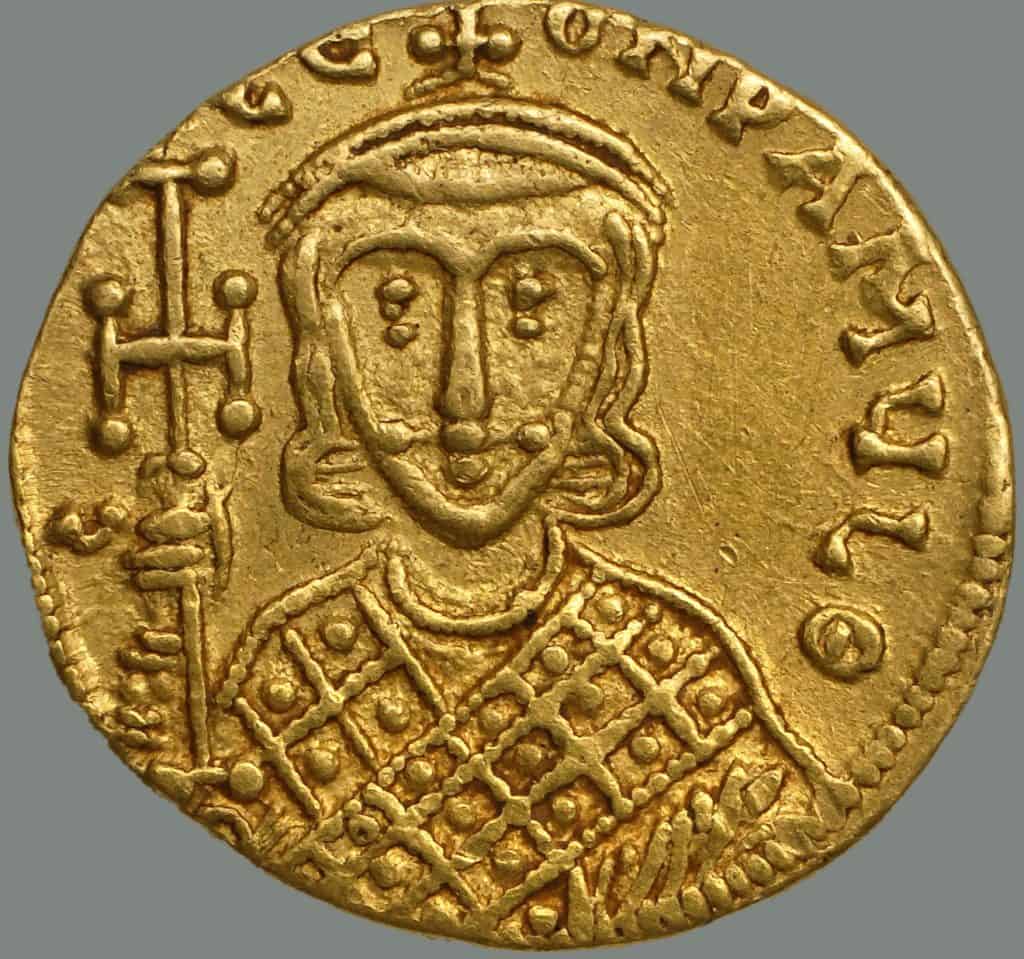
Constantine V ruled the Byzantine Empire between 741 and 775 AD and seems to have been every bit as mad as all of the other Byzantine Emperors. He spent most of the time that he wasn’t waging war in persecuting monasteries, churches and Christians that dared to worship religious relics and icons. Constantine was fanatical in his belief that the only genuine sacred rite or symbol was the Eucharist and he devoted a lot of time to purging all others and punishing those who worshipped them.
This meant burning down churches and monasteries and destroying religious artifacts, while those who defied Constantine were stoned, burned to death or had their bodies mutilated as punishments. Constantine is believed to have carried out some of these violent purges himself, including putting oil on the beards of those monks that refused to repent, before burning them alive. Given all this, we should not be surprised that a lot of Christians hated Constantine and that is how he got his nasty nickname. They spread the story that he had crapped in the baptismal font when he was baptized as a baby, which led to him being called Constantine ‘Kopronymos’ – which means ‘named in dung’. Whether the story was true or not is uncertain, but we do know that he was a crappy human being, so it is oddly appropriate anyway.[10]
Top 10 Nazi Links To The British Royals
About The Author: I am a freelance writer from Dundee, who also makes short films under the name Wardlaw Films.





